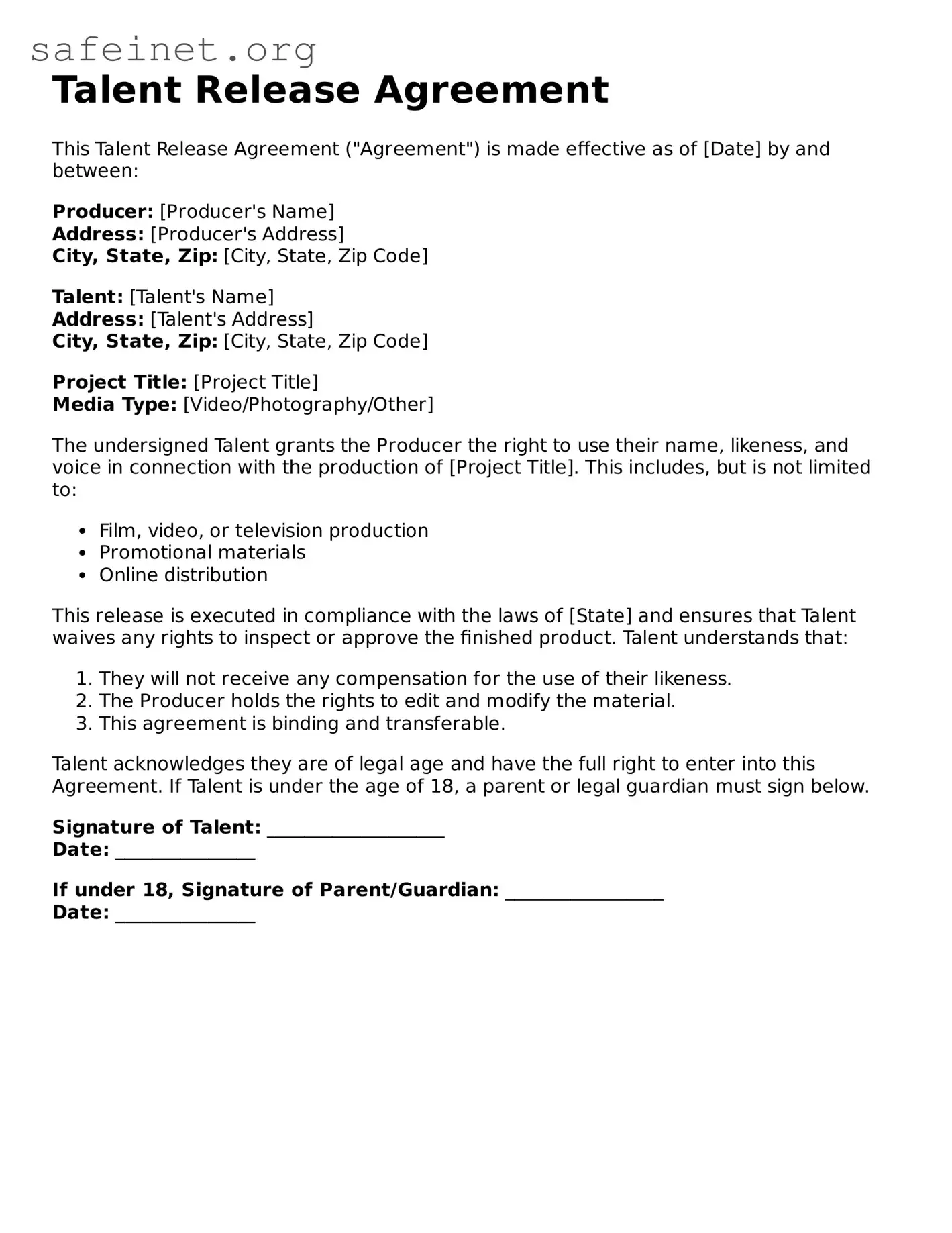Talent Release Agreement
This Talent Release Agreement ("Agreement") is made effective as of [Date] by and between:
Producer: [Producer's Name]
Address: [Producer's Address]
City, State, Zip: [City, State, Zip Code]
Talent: [Talent's Name]
Address: [Talent's Address]
City, State, Zip: [City, State, Zip Code]
Project Title: [Project Title]
Media Type: [Video/Photography/Other]
The undersigned Talent grants the Producer the right to use their name, likeness, and voice in connection with the production of [Project Title]. This includes, but is not limited to:
- Film, video, or television production
- Promotional materials
- Online distribution
This release is executed in compliance with the laws of [State] and ensures that Talent waives any rights to inspect or approve the finished product. Talent understands that:
- They will not receive any compensation for the use of their likeness.
- The Producer holds the rights to edit and modify the material.
- This agreement is binding and transferable.
Talent acknowledges they are of legal age and have the full right to enter into this Agreement. If Talent is under the age of 18, a parent or legal guardian must sign below.
Signature of Talent: ___________________
Date: _______________
If under 18, Signature of Parent/Guardian: _________________
Date: _______________
